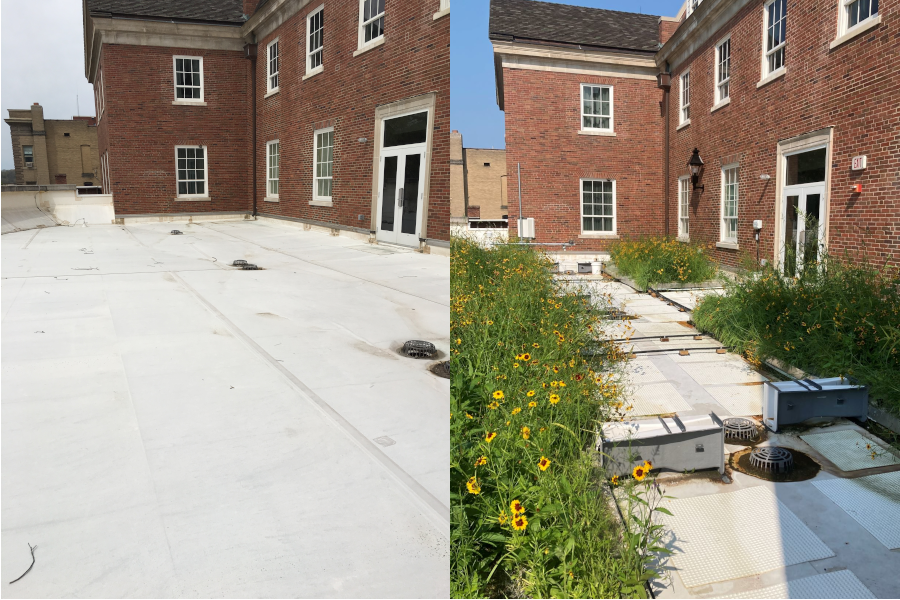
Benefits of Green Infrastructure
-
Stormwater Managment
Rain falling on tiled roofs is usually channeled as quickly as possible to the street and into our storm drainage systems. The Green Roof helps absorb that rain for plant use. The Schoonover Green Roof's flume system helps us measure the rainwater that leaves the planting beds and the quality of that water.
-
Air Quality & Temperature
Green roofs reduce carbon dioxide in the atmosphere by storing it in plant tissue. They mitigate the urban heat island effect by covering heat attracting roofs with vegetation that absorbs sunlight radiation. Temperature is lowered further due to evapotranspiration from the plants.
-
Overall Economic Benefits
Green roofs last longer than conventional rooftops because the membrane is protected from UV radiation and heat stress. Green roofs help to reduce the load on a building's HVAC system in winter and summer, resulting in overall energy cost savings! They also improve property values.
65%
Green roofs reduce rate of storm water runoff from a roof by 65%.
(U.S. General Services Administration 2011)
30% - 40%
Green roofs make roof surfaces 30-40% cooler.
(U.S. General Services Administration 2011)
+23 years
Green roofs last 23 years longer than black rooftops before replacement is needed
(U.S. General Services Administration 2011)
History of the Schoonover Green Roof
Schoonover Center was remodeled in 2013 with a new rooftop built to hold a green roof, although it was not planted then. In the fall of 2017, an interdisciplinary group of faculty began working to install a green roof on campus that could be used by students and faculty for research and educational activities. Scripps College was a willing partner in converting their unplanted rooftop to a green roof.
Grants were written to PepsiCo Zero Impact Fund and the Academic Innovation Accelerator to acquire funding for the green roof installation. PACE and 1804 grants have been supporting student employees who have helped us advance the project. Students and faculty across the university began developing art, communication, engineering and research projects, well before the installation began.
A new student organization, the Green Initiative, was formed in February 2020 with tremendous energy dedicated to promoting green infrastructure through media, research, outreach and advocacy.
After a couple years of planning and a delay in the planting due to the novel coronavirus, the rooftop was transformed into a green roof in early July 2020. Student projects have continued to take shape, even as the university has instituted essential safety precautions during the pandemic.
Use this website to learn more about green roofs, green infrastructure and sustainability and to find resources for your classroom or ideas for projects. The history of this green roof endeavor will continue to grow as we envision a green-filled future. Check back often!


